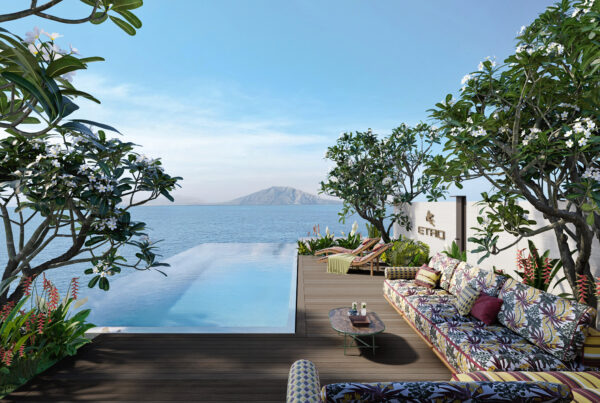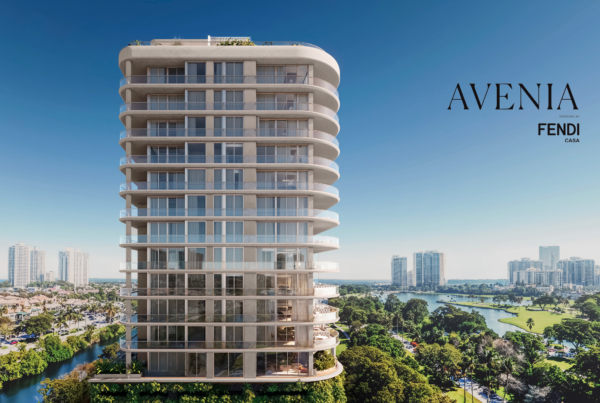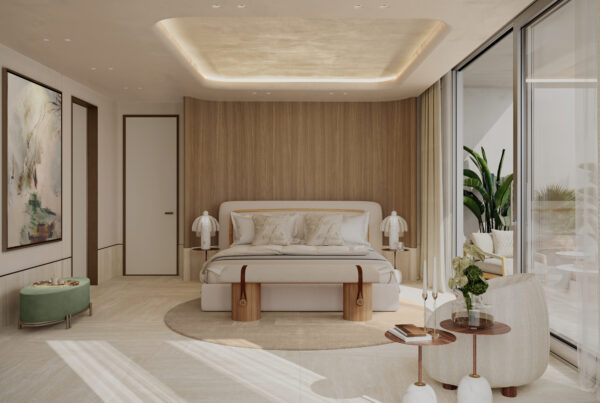
Dear readers,
In this edition of our monthly newsletter, we will delve into the role of CMO – Chief Marketing Officer – with the help of one of the best in the category: Joanna Davila, associate at Vertical Developments.
Joanna will help us understand better her role, the challenges and rewards linked to it and how it variates from project to project.
Can you describe your role as CMO and how it fits into the overall strategy of developing branded residences?
As the CMO, I oversee the marketing and sales divisions of Vertical Developments and its real estate projects. My background in the fashion industry, along with experience working with hospitality and lifestyle-driven brands, has given me a deep understanding of how brands operate and maintain consistency through their guidelines. This is crucial when ensuring that a real estate project feels like a natural extension of the brand.
My role involves guiding this vision across all divisions of the company, not just in marketing and sales, but also in areas like interior design. We ensure that materials, aesthetics, and overall design choices align with the brand’s ethos and philosophy, creating a seamless experience that reflects the brand’s identity. It’s not just about the real estate—it’s about creating an experience as a lifestyle.
As CMO of Vertical Developments what are the substantial differences in communication between branded projects and other residential projects? What are the benefits and challenges?
When you’re a developer creating your own vision, you have more freedom to define and shape your brand. However, when working with established brands from industries like fashion, hospitality, or media, such as Elle, it’s different. These brands come with a rich history and established identity, and your role becomes a bit like being a historian. You need to understand their past, their future direction, and how to translate that mindset into a physical space so a buyer truly feels they are getting the brand experience.
The feeling you get when walking through a branded space is reflected in every detail, from the cocktail napkins to the way the concierge greets you, the sales presentation, and even the staff training. This process requires a deep understanding of the brand’s history, as well as the psychology behind how to deliver a consistent brand experience while collaborate with a host of experts and
professionals who bring different perspectives and expertise to the table.
Branded real estate projects usually involve a larger team and require a higher level of collaboration and communication. With more stakeholders, there are more opinions and guidelines to navigate, which makes clear communication and alignment essential. This is the most crucial aspects of managing branded real estate projects, balancing the needs of a brand with a developer.
Vertical and TOA have been working together for some time now and we have 3 ongoing branded projects. Two are with fashion luxury brands and one – recently launched – was branded with a lifestyle brand. In what way was it different the process of planning the marketing assets and communication?
Each brand is unique, and that’s what makes this process so exciting. Our collaboration with The One Atelier has allowed us to work on diverse projects, each with its own distinct identity. What has been particularly valuable is how The One Atelier has not only demonstrated their versatility in translating three very different look & feels, and experiences from a design perspective but also supported us in navigating conversations with the brands.
As a developer, when building a portfolio, you want to ensure that your projects don’t compete with each other. Having consistency with a trusted partner while also knowing that each project brings something new to the market is rare. Typically, developers might work with different teams for each project to ensure that each stands out and doesn’t overlap. However, we were fortunate to maintain a consistent partnership with The One Atelier, which has provided us both variety and reliability.
At Vertical Developments, we place great value on nurturing these types of relationships. As a young developer, we are in the early stages of showing not only South Florida but also the world what we’re capable of. Our success is deeply tied to the quality of the people we work with, and we believe in fostering strong, long-term partnerships.
What trends are you seeing in consumer preferences for branded residences, and how are you responding to these?
It’s all about the experience. When it comes to branded residences, people want to fully immerse themselves in what they’ll be getting in the future. A great example of this trend is the sales gallery—it’s no longer just a place to view models or floor plans. Buyers expect more than a standard presentation: they want champagne, social media engagement, and events that highlight the brand’s core values and philosophy.
With Elle Residences Miami, for example, we’ve taken the opportunity to try new approaches, like hosting an astrology event at the sales gallery —while we’re selling a building, we’re not always putting the building itself at the center of attention. Instead, we leverage the rich history, culture, lifestyle, and entertainment associated with the Elle brand, allowing us to pull off a more immersive experience.
For other fashion-branded projects, that are more traditional due to the brand’s strong identity and connection to the concept of “home”; we are still transforming the sales gallery, which feels less like a sales center and more like a preview of the client’s future apartment, but also our sales approach: instead of a formal sales pitch, we invite clients in for cocktails and casual conversations—much like friends catching up—so they can envision what life in their new home would feel like.
There’s a lot of potential for more innovation in how we sell real estate, both branded and non-branded. The process is becoming similar to how fashion or car brands sell their products. Ultimately, we’re not just selling a building; we’re creating a home and we need to focus on selling the feeling of living in that space, not just its appearance.
How important is storytelling in marketing branded residences, and how do you craft a compelling narrative around the development in order to target your audience and surpass any competitors on the market?
Storytelling is crucial in marketing branded residences, particularly in ensuring the brand’s ethos, history, and philosophy are consistently reflected throughout the project. That is what is attracting a buyer to the project in the first place, their familiarity or their innate understanding of the brand. From there it’s about focusing on the details that bring that story to life, elevating the experience and finding something that the audience feels they can’t live without—something that resonates deeply with them. Also you have to work with good storytellers, it’s a talent.
Storytelling is crucial in marketing branded residences, particularly in ensuring the brand’s ethos, history, and philosophy are consistently reflected throughout the project. It’s not just about telling a story; it’s about focusing on the details that bring that story to life.
Crafting a compelling narrative requires careful thought. You have to consider a range of factors, such as the location, local and global market conditions, economic trends, and even migration patterns. The starting point is identifying your target audience: “who are you building for?” We think about who is currently in the area or who is likely to move there, and then ask ourselves what we can offer that sets us apart from other developments in the same market. It’s about elevating the experience and finding something that the audience feels they can’t live without—something that resonates deeply with them.
By combining all these elements—the audience, location, market trends, and lifestyle—you create a narrative that not only stands out but also makes your development feel indispensable. This is how we craft a story that not only appeals to our target market but also helps us rise above the competition.
How does your marketing strategy evolve through the different phases of a branded residence development, from pre-launch to post-sales?
There’s always a structured approach to marketing in real estate development, typically involving a pre-launch strategy, a groundbreaking event, a topping-off ceremony, and the official launch. These milestones are standard in every project, but how and when you execute them can vary greatly based on numerous factors—sales performance, market conditions, and the political and economic landscape of the area.
Flexibility is key. I like to think of our marketing strategy as operating in sprints, with regular reviews every three months. During these reviews, we assess what worked well, identify areas for improvement, and determine where we need to pivot our approach. Creativity also plays a crucial role. While there are standard tasks that need to be accomplished, it’s essential to incorporate surprising and innovative elements.
We would like to extend our heartfelt thanks to Joanna for allowing us a glimpse into her role and daily responsibilities. It was incredibly insightful and fascinating to learn her unique perspective and better understand her position.
Thank you, dear readers, for joining us in this conversation.
We look forward to catching up next month with more exciting news!


